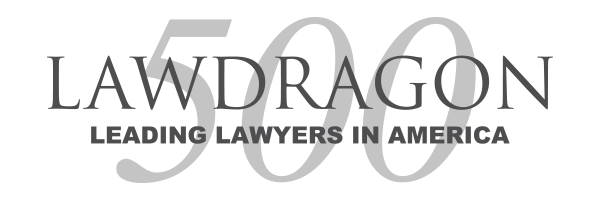What is a Class-Action Lawsuit and How Does it Work?
A class-action lawsuit is a civil lawsuit brought on behalf of a group of people or business entities who have suffered common injuries as a result of the defendants’ conduct, with at least one individual or entity acting as a representative of that group. While the issues of a class action can vary, the issues in dispute are common to all class members.
Class actions can be brought in state or federal court. If the case involves federal laws, then federal court is the proper jurisdiction.
Why are Class Actions Preferred?
Each litigant could bring their own action, so why join all the actions into one class-action lawsuit? The answer is that it is often more practicable for the plaintiff, the court and the defendants to join the individual actions into one lawsuit.
- Class actions are practical for the plaintiffs. Class actions mean just one set of witnesses, one set of experts, one set of documents and one set of issues. This efficiency makes it less expensive and easier for one law firm to handle one case than having one or more law firms try multiple cases.
- Many individual cases do not have enough damages to justify the time and expense to bring the cases separately. As an example, a bank might be charging illegal fees of $20 to $100 dollars to millions of customers. Because the damages are so small, it simply wouldn’t be worth the time and expense for a lawyer to bring a $100 lawsuit for each and every customer. One class-action case claiming several hundred million dollars on behalf of millions of clients is worth the time of the class members.
- One recovery also means all the victims get a fair distribution of the damages. When there are multiple lawsuits, the first few plaintiffs to win may get all the insurance proceeds or all the assets of the defendant leaving little or no money for those who win their cases later.
- Class actions are practical for the courts because one lawsuit is also cheaper for the courts than multiple lawsuits. One lawsuit means just one judge and one courtroom. One class-action lawsuit also means that multiple cases won't clog up the court schedules.
Another benefit of class actions for plaintiffs is that it levels the playing field. Defendant corporations are better situated to financially defend just one claim but when a law firm such as Hagens Berman brings a class action on behalf of many claimants, then the contest becomes a fair dispute. A defendant corporation that has to defend multiple claims is not only more likely to settle the class action but is more likely to really change its misconduct.
What are some Examples of Class-Action Lawsuits?
There are many cases and issues that can be brought as class-action lawsuits. Often, class actions fall into one of the following categories:
Securities: Securities class actions are brought by plaintiff investors who were injured by defendant companies’ improper conduct including investor fraud and whistleblower litigation.
Product liability or personal injury: Product liability and personal injury class-action lawsuits are generally brought when a defective product physically harms a large number of individuals. A common example is pharmaceutical fraud that results in the manufacture and distribution of a harmful drug that is used by many patients. Other injury examples include mass disasters such as social work or nursing home negligence, human rights violations, sexual abuse and sports litigation.
Consumer: These class actions hold accountable business entities who engage in systematic and fraudulent or illegal business practices that scam or harm the consumer. Examples include antitrust cases like price-fixing, market allocation agreements and monopolistic schemes.
Employment: Employees who have been discriminated against, employees with immigrant worker issues, workers who have hour and wage issues and employees who have on-the-job injuries or suffer because of employer safety violations can bring class-action lawsuits against employers.
What are The Stages of a Class-Action Lawsuit?
Hire the right law firm. Any claimant who has suffered an injury or damages that others may have also suffered needs to make sure they hire an experienced class-action law firm – one with a track record of success and the resources to advocate on behalf of thousands or even millions of claimants. There is an art to certifying the class, making sure the victim is approved as lead plaintiff, trying cases and negotiating cases. A class-action law firm also needs to have experience in successfully trying the underlying legal claim.
File a lawsuit. Typically, a class-action lawsuit is started by filing a complaint that names at least one class representative, and that representative files the lawsuit on behalf of the entire proposed class. The defendant(s) will have a right to respond to the lawsuit. Defendants may object that the class-action requirements haven't been met or that the lawsuits would be better handled on an individual basis.
Obtain class certification. Once the complaint is filed, the class representative will file a motion to have the court certify or approve the proposed class. To get approval of the class, the class representative and the law firm(s) representing the class representative must:
- Show that there is a proper legal claim against the defendant(s).
- Assign a lead plaintiff. The plaintiff who files the lawsuit, normally the class representative, needs to be formally approved as the lead plaintiff when the class is certified. The lead plaintiff will hire the class-action law firm, file the lawsuit, consult with everyone who has an interest and agree to any settlement. The lead plaintiff must be a typical member of the class, have no conflict with other class members and have the ability to represent the class.
- Prove that the class is large enough. This means that there are enough similarly injured people as the lead plaintiff. If the injuries for each member of the class are different, this might invalidate the class.
Provide notice to members of the class. In most cases, once the lawsuit is certified as a class action, notice must be sent to all individuals who could be considered part of the class. Notice is sent by direct mailings to known claimants as well as through the media and through the Internet.
Allow for opting in and opting out. Membership in the class is generally automatic, but everyone who was injured usually does have the right to opt out of the lawsuit. The right to opt out should be set forth in the notices. Sometimes injured victims can opt out of the lawsuit. Other times, they are limited to opting out of any settlement. Injured victims who have different injuries from the other class members, lost more money than the other class members or who want more control over the case may want to opt out of the class action.
Try the case or negotiate a settlement. Once the class is certified and the notice period is complete, the lead plaintiff will proceed with his/her case against the defendant(s). The case will then proceed to a decision by a judge or by a jury or a decision on appeal – unless a settlement is reached.
If a verdict or a settlement is reached, all members of the claim must be notified. If a settlement is reached, injured victims will normally be notified that they can opt out of the settlement if they file proper and timely notice. Once the opt-out period has expired and the settlement proceeds have been paid, the lead plaintiff and the lead plaintiff's counsel will arrange for payment to all eligible victims.
Pay and distribute the damages. Typically, the law firm representing the plaintiff gets a percentage of the agreed sum first, the lead plaintiff gets paid second (normally a higher share than the other members of the class because of the extra work the lead plaintiff did in handling the class-action case) and then the members of the class get paid. All settlements must be approved the presiding judge.





